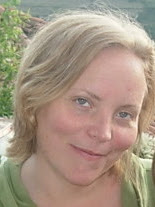Write an Essay on your Proposed Topic Choice
(3-5 pages, 12 pt font, 1 inch margins)
Try WRITING TRICKS for help with style and other tipsW
1. Introduction Paragraph
A. Thesis statement
B. Overview of your entire paper
C. Brief history/biography including influences on this person.
2. MAJOR IMPACT on History
A. What was the historical problem?
B. How did this person contribute to the creation or solution of this problem?
C. What caused this person to act?
D. How did he/she achieve key change? How did he/she motivate others?
E. Who else was involved, what happened, where, why, important dates
F. What talents did he/she use?
G. What effect did it have on their time?
H. What long term change happened because of their actions?
3. Explain how this person connects to NHD Theme "The Individual in History: Actions and Legacies".
A. Why should we care about this person today? Are they famous? If not, why should they be?
B. What is their legacy today? In what ways can we see and feel it?
C. What larger event or movement did this person contribute to that changed history?
4. BIBLIOGRAPHY
A. 5-10 SOURCES
B. MLA Format
Tuesday, October 21, 2008
Wednesday, October 15, 2008
3rd Annotation and INTRODUCTION
Please have your third annotation, thesis statement and paper introduction complete by TUESDAY OCTOBER 21.
This will give you the weekend to work on them if you need.
How to make an Annotation
Original Requirements for Annotations
Example Annotation (web)
Moyers, Bill. "Rachel Carlson."Bill Moyers Journal. September 21, 2007. PBS. 10/15/08.
http://www.pbs.org/moyers/journal/09212007/profile.html
This article gives a brief biography of Carlson's early life growing up in Pennsylvania, and how she became involved in studying and writing about wildlife and natural habitats. The article also discusses her controversial book, "Silent Spring", and how it prompted the Kennedy administration to investigate the impact of pesticide on the environment.
This article references several primary sources, including newspaper reviews and letters to the editor from 1962 when the book was published. it also provides links to several other sites about Carlson and her work for the environment, as well as the issues at stake. The author, Bill Moyers, is a journalist who has been reprting since the 1950s, and has worked for PBS and CBS. This article was helpful to my research because I found out how Carlson first got interested in the environment, and because it provides many useful links to additional research. I now have to follow up on how her book specifically affected policy and made changes, and I have to find out what is DDT and what is the debate.
Example thesis statement and introduction:
Rachel Carlson was a visionary of environmental protection. She wrote many articles and books about how chemicals were poisoning the environment. Because of her research and writing, laws have been enacted and most of the pesticides whose use she criticized have been banned. Her message carried beyond the specific problem of pesticide use, and prompted the Federal Government to take action against water and air pollution as well as against the misuse of pesticides several years before it otherwise might have moved. Today, we still debate man's affect on the environment and global warming and despite the many beneficial changes to policy that sprang from her work, Americans now apply more than twice the amount of pesticides they did before Silent Spring was published, and totals also are increasing around the world.
This will give you the weekend to work on them if you need.
How to make an Annotation
Original Requirements for Annotations
Example Annotation (web)
Moyers, Bill. "Rachel Carlson."Bill Moyers Journal. September 21, 2007. PBS. 10/15/08.
http://www.pbs.org/moyers/journal/09212007/profile.html
This article gives a brief biography of Carlson's early life growing up in Pennsylvania, and how she became involved in studying and writing about wildlife and natural habitats. The article also discusses her controversial book, "Silent Spring", and how it prompted the Kennedy administration to investigate the impact of pesticide on the environment.
This article references several primary sources, including newspaper reviews and letters to the editor from 1962 when the book was published. it also provides links to several other sites about Carlson and her work for the environment, as well as the issues at stake. The author, Bill Moyers, is a journalist who has been reprting since the 1950s, and has worked for PBS and CBS. This article was helpful to my research because I found out how Carlson first got interested in the environment, and because it provides many useful links to additional research. I now have to follow up on how her book specifically affected policy and made changes, and I have to find out what is DDT and what is the debate.
Example thesis statement and introduction:
Rachel Carlson was a visionary of environmental protection. She wrote many articles and books about how chemicals were poisoning the environment. Because of her research and writing, laws have been enacted and most of the pesticides whose use she criticized have been banned. Her message carried beyond the specific problem of pesticide use, and prompted the Federal Government to take action against water and air pollution as well as against the misuse of pesticides several years before it otherwise might have moved. Today, we still debate man's affect on the environment and global warming and despite the many beneficial changes to policy that sprang from her work, Americans now apply more than twice the amount of pesticides they did before Silent Spring was published, and totals also are increasing around the world.
Subscribe to:
Posts (Atom)
